Gotham Greens: Brooklyn's New High-Tech Rooftop Farm
by: fast company, 2011-06-28 18:49:37 UTC
Using hydroponics and climate control technology, the farm is serving up hundreds of pounds of super local lettuce to the city's markets on the same day it's harvested.
 The borough of Brooklyn knows from rooftop farms. Ever since the urban farming craze hit, small and large farms have been popping up on warehouse roofs to serve bearded young people who, not used to making sacrifices, want to live in the city and also eat farm-fresh vegetables. But Gotham Greens, a farm two years in the making that sold its first lettuce a few weeks ago, is a rooftop farm of a different breed. It could, in fact, be the rooftop farm of the future.
The borough of Brooklyn knows from rooftop farms. Ever since the urban farming craze hit, small and large farms have been popping up on warehouse roofs to serve bearded young people who, not used to making sacrifices, want to live in the city and also eat farm-fresh vegetables. But Gotham Greens, a farm two years in the making that sold its first lettuce a few weeks ago, is a rooftop farm of a different breed. It could, in fact, be the rooftop farm of the future.
In a custom built 15,000-square-foot greenhouse in Brooklyn's Greenpoint
neighborhood, Gotham Greens is currently growing five kinds of lettuce,
and supplying the leafy goodness to New York's Whole Foods, Fresh Direct, along with
Mario Batali's Eataly and other stores. "We harvest in the morning and it's in the store in the afternoon, says Viraj Puri, cofounder and CEO. "Literally, they get it the same day. And we can do that
year-round."
Because of
their state-of-the-art climate control system and hydroponic growing
methods, Gotham Greens will still be providing that lettuce to Whole
Foods in the middle of winter. It's hard to get local lettuce
(especially lettuce so local it was grown less than 10 miles away) in a
New York winter. Now you can. "It's on a pretty sophisticated computer control system that has sensors all over the place," Puri says, "and will deploy lights and fans and shades curtains and heat blankets and irrigation pumps automatically."

We profiled the company when it announced its launch, as well as some of its tech, and now that the farm--which has the usual bevy of sustainable innovations like a solar array and captured rainwater--is up and running, it will be producing about 550 pounds a day (that's 100 tons a year) of greens for the city. And while the initial focus is on greens, plans for a second farm with a focus on vine vegetables like tomatoes are in the works.
Follow @fastcompany


 Recycled Shipping Containers As Disaster Response: School Built In Four Weeks After Earthquake
Recycled Shipping Containers As Disaster Response: School Built In Four Weeks After Earthquake
by: TreeHugger Design, 2011-06-28 15:54:33 UTC
 Photos: VientoFuerte.cl.
Photos: VientoFuerte.cl.
Shipping containers continue to prove their value
to build almost anything, from
amazing office buildings to
houses to even
boy scout cabins.
And alth...
Read the full story on TreeHugger
Solar-Sinter 3D printer creates glass objects from sun and sand
by: Gizmag Emerging Technology Magazine, 2011-06-28 03:56:25 UTC

We’ve seen a growing number
3D printers that use additive manufacturing technology to form objects one layer at a time, usually from resin or ABS plastic. But Markus Kayser, an MA student at the Royal College of Art in London, has created a 3D printer that creates 3D objects using two things found in abundance in the desert – sun and sand. As well as being powered by the sun via two photovoltaic panels, the Solar-Sinter also focuses the sun’s rays to heat sand to its melting point so it then solidifies as glass when it cools, allowing the computer controlled device to produce glass objects from 3D computer designs...
Continue Reading
Solar-Sinter 3D printer creates glass objects from sun and sandTags: 3D Printer,
Royal College of Art,
Solar-powered
Related Articles:


 Energy-Saving and Washing Dryer Cubes
Energy-Saving and Washing Dryer Cubes
by: EnviroGadget, 2011-06-27 09:00:38 UTC
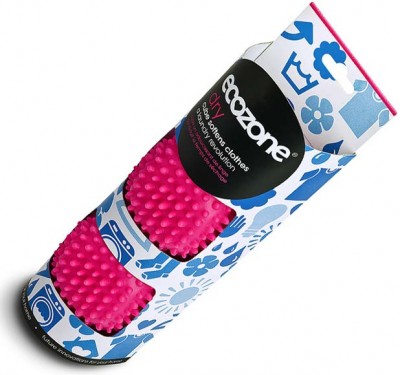
These Dryer Cubes are a great way to help your clothes to dry faster and softer without the need for chemicals. Simply placing the cubes with your wet laundry into your tumble dryer allows them to help speed up the drying process and soften your clothes without the need for fabric softeners or tumble dryer sheets.
The Dryer Cubes by Ecozone are a great way to cut down your laundry costs and help to lessen the amount of chemicals you use. The cubes have specially designed little nodules over them, these help to agitate the clothing helping to physically break down the stiffness caused by the water drying. This ability means you do not need to use fabric softener with your wash, nor would you need a dryer sheet, this is not only beneficial to the environment, with less chemicals in the water, less production and transport, but is also beneficial to those with asthma, eczema or allergies. The ability to soften the clothes also helps to make the clothes easy to iron helping to reduce a further electric cost.
The Dryer Cubes help the hot air to circulate around the laundry in a more efficient manner. The cubes themselves retain the heat, helping the drying process and separate the items out to increase airflow. It is thought that these effects can help to reduce drying time by 25%, making an obvious saving to your electrical bill. The cubes will last for between 2 – 5 years depending on level of usage, helping you to save money wash after wash. The cubes are a chemical free way to ensure you have soft, easy to iron laundry that drys in less time, benefiting both you, your money and the environment.
The Dryer Cubes are just £10.95 with free delivery.
Want to buy this gadget? Check out the Energy-Saving and Washing Dryer Cubes article on EnviroGadget to see the lowest prices for this gadget.
© 2008 to 2011 EnviroGadget.com. You can now keep up with the latest eco-gadgets on the EnviroGadget Facebook page. Why not help us to spread the word?
Related posts:
- Eco Dry Hair Dryer By Babyliss
- Morphy Richards Ecolectric Energy Saving Iron
- BioWashBall – Washing your clothes without detergent


 Aquaskipper will let you walk on water, literally!
Aquaskipper will let you walk on water, literally!
by: The Design blog, 2011-06-28 08:26:03 UTC
Asmita Prasad:

Aquaskipper HydrofoilAquaskipper is a human powered hydrofoil
So far Our Lord and Criss Angel have been the only people known to have successfully walked on water in recorded history and even that has been disputed by non-believers. Many gifted designers in years gone by have tried to come up with contraptions that could aid in the near-miraculous feat but even the supremely talented Leo DaVinci found it hard to get the idea off the drawing board and into an actual working prototype. But this human-powered watercraft could change all that and help many of us, well, walk on water.
Picture Gallery
Aquaskipper weighs a mere 26 pounds and can move at speeds of up to 17 mph
The Aquaskipper Hydrofoil Human Powered Watercraft is a revolutionary new product fresh off the production lines which could be the ultimate breakthrough in water-trodding technology. Fashioned out of lightweight aluminum, the kinds that is used to make aircrafts, the design is eco friendly, causes no noise pollution, no water pollution and is completely safe to use.
Using a patented design, the AquaSkipper comes laced with hydrofoil wings that have marginal drag in water and a fiberglass spring mechanism that help users to get the vehicle moving across the water’s surface simply by hopping up and down on it! The basic mechanism of the watercraft allows each jump to create enough force to compress the fiberglass spring which in turn causes the angled back foil to push downwards and generate enough propulsion to move the craft forward. Since the front foil of the craft is locked at a specific height while it is in the water via the skimmer, the craft thus glides across the water surface smoothly.
The 6 feet long craft has a wingspan of 7 feet and can be assembled and dissembled with ease making it an ideal vacation sport essential. Weighing in at a mere 26 kgs, it is also relatively easy to carry in the tote bag that comes with the $495 purchase.
The AquaSkipper has also been featured on prestigious shows like Discovery Channel’s MythBusters, MTV’s Parental Control, I Want That! on HGTV and, Beyond Tomorrow. The design has also won numerous awards including the international award for new sport-related inventions at ispo BrandNew in Munich, Germany and as well as a cool semi-final spot in the History Channel’s Modern Marvels Invent Now Challenge in 2007.
Via: Gadgets and Gear


 Aqua Washbasin saves water, ensures hygiene
Aqua Washbasin saves water, ensures hygiene
by: The Design blog, 2011-06-28 08:29:22 UTC
Jaspreet Walia:

Aqua by Chris MillardWater Saving Wash Basin
Water is precious, so its misuse in any form can lead to its critical shortage that will affect human life negatively. The product here in question will tackle with water wastage. Chris Millard has designed this ingenious wash basin named Aqua. It will be fitted in commercial restrooms and will aim to save water by almost 65 percent.
Picture Gallery
Water saving wash basin Aqua by Chris Millard.
The helmet-shaped wash basin will make good use of efficient and direct water flow. It will cut down water pressure and, in turn, reduce the amount of water required for washing hands. It has been fitted with infrared sensors that activate water and sanitizer release when hands are placed over that area. The perforated design ensures apt usage and least wastage. Water comes out from these holes and falls on the hands. The top of this dome releases water that falls on the back of the hands. To clean and wash hands effectively, users are expected to move their hands in a circular motion. This will also help in exfoliation and maintain adequate hygienic levels.
Aqua will be coupled with regular plumbing arrangement. The system has been devoid of separate hot and cold options. Instead, water will be pumped at a set temperature (15 degrees) and will clean hands effectively. The high-end wash basin can be positioned at airports, hotels, bars, clubs, etc. Aqua is a great option to keep hygienic state intact while saving precious water.
[Cheers Chris]


 Ary Kotlik’s sizzling Philips Steam Iron concept
Ary Kotlik’s sizzling Philips Steam Iron concept
by: The Design blog, 2011-06-28 12:22:30 UTC
Asmita Prasad:

Philips Steam Iron conceptDesigned by Ary Kotlik
Ironing is perhaps one the most relaxing activities known to man. The steam, the soft sizzle, the repeated yet gentle movement and seeing the creases disappearing from clothes have a rather soothing effect on anyone who appreciates neatly ironed clothes. But steam irons available in the markets today don’t always deliver the convenience they promise. They are bulky with tonnes of knobs, complicated settings and spill water all over your ironing if you’re not too careful. This is where this nifty little creation from Ary Kotlik comes in.
Picture Gallery
Philips Steam Iron concept designed by Ary Kotlik
The Argentinean designer has tried to simplify the otherwise complex steam iron by separating the steam-generating component of the gadget from the iron itself. The concept is composed of two parts: a base and an iron that are connected through a hose. The base houses a super-efficient boiler that creates the steam which is delivered to the iron. This frees the iron from carrying the load of the water and having additional mechanics inside it to create the steam. This also allows the iron to be used vertically on curtains and clothes on hangers, which cannot be done too easily with a traditional steam iron.
A handy joystick located on the iron’s handle allows the user to manipulate the settings easily while two buttons located at the back of the base wind the electric cable and the hose when the iron is no longer in use. On the inside, the iron comes laced with a water-purification filter and a really smart microprocessor that creates a frequency-modulated electromagnetic field inside the supply pipe that feeds the boiler. This feature basically eradicates any mineral formation inside the iron’s plumbing thus ensuring trouble-free operation.
Other intuitive features of the concept include the display screen which beams out information regarding ironing modes, temperature, etc. The handle also houses the anti-mineral filter and can be rotated 180º to expose the filter as well as to release the water in the tank. The iron is attached to the base via a magnetized plate on top that secures the soleplate of the iron to the base making it a handy child-proof security feature.
The design was selected among the twenty-five finalists in the Philips iron steam design contest and its user-friendliness certainly makes it a concept that ought to be seen in the markets soon.
[Thanks Ary]


 VoltAir: The Electric Passenger Jet Of The Future
VoltAir: The Electric Passenger Jet Of The Future
by: fast company, 2011-06-27 19:19:24 UTC
Screw those fume-spewing turbofan engines dangling from the wing's of today's planes: We want this future all-electric passenger jet, and it's not even that far away.
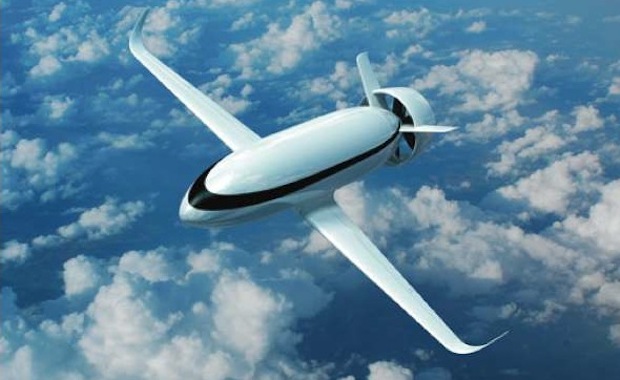
VoltAir made a showing at the recent Paris Air Show, on the same stand as the incredible Concorde-of-the-future Zehst space plane, and though it looks much more conventional, it's almost (if not actually more) important for the future of travel. For though Zehst and other craft like it may shrink the globe with super-fast travel, it's aircraft derived from VoltAir that could change the world sooner. Because VoltAir is a zero-emissions airliner for the rest of us--an all-electric alternative to the planes you've always flown in.
VoltAir's magic is all about its pusher-prop ducted fan, and the electric motors that power it. The prop's design is a twin co-axial contra-rotating design, delivering excellent propelling power very efficiently. But what's truly clever are the engines, which would be made of high-temperature super-conducting materials. The engine would be bathed in liquid nitrogen, to drop its temperature to the right operating zone for the wiring which, unlike the copper wiring in a traditional motor, actually only works if cooled. Though this adds a structural burden to the design, it has one astonishing upshot: Superconducting motors would waste almost none of the electrical energy pushed into them, making the plane ultra-efficient.
[youtube PIHBDaySH6U]
The VoltAir makes use of plenty of other tricks in its design, though. The airframe would be made largely of composites which makes for incredible strength and significantly lighter weight. The wings use the same advanced curling wing tip that Boeing's employing on the 787 Dreamliner--they're better at preventing drag. And its unusual bullet-like shape means the drag vortices caused by the body itself is actually gobbled down by the pusher-fans, which also creates better aerodynamics.
The problem of recharging the thing--you can't have your electric plane plugged in for 16 hours after each flight--is also neatly solved with a trick of the battery design. They're mounted in the cargo hold, so they could be swapped in and out in the same way as a pallet of cargo is. This also has the side-effect of speeding up ground operations compared to refueling a conventional jet, and that saves money (though we do wonder if that amazing refillable rechargeable cell idea would be a better fit to the VoltAir design).
All of this is extremely plausible, even those novel batteries, and VoltAir is, in many ways, just a rethink of a small airliner. There's just one flaw: The tech to make the electric motors doesn't quite exist yet. It's not far off, though, and EADS--the designers of the plane--think it's possible they'll be available relatively soon (definitely sooner than the far distant first-flight of Zehst, for sure).
Chat about this news with Kit Eaton on Twitter and Fast Company too.


 E-Reader Ownership Doubles, Surges Ahead Of Tablet Adoption
E-Reader Ownership Doubles, Surges Ahead Of Tablet Adoption
by: fast company, 2011-06-27 20:05:15 UTC
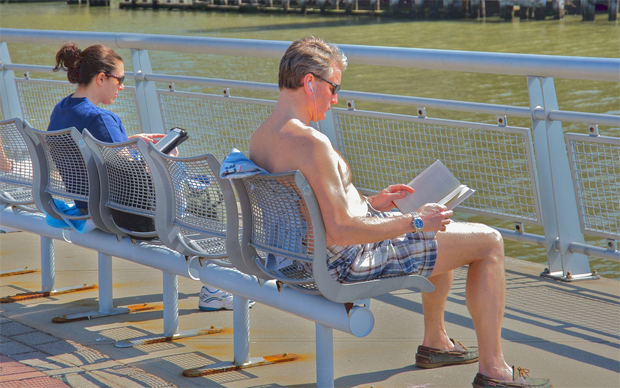
E-reader ownership among U.S. adults has surged in the last six months, doubling from 6% to 12%, according to a survey released today by the Pew Research Center. That remarkable rate of adoption surpasses even tablets, which are owned by just 8% of adults 18 and older.
That's great news for Amazon and Barnes & Noble, whose e-readers, the Kindle and Nook, are flying off shelves (e-shelves, rather). But it might also come as a surprise to consumers inundated with ads for the iPad, Samsung Galaxy Tab, and Motorola Xoom that e-readers are outpacing tablets.
"Tablet computers…have not seen the same level of growth in recent months," writes Pew's Kristen Purcell. "In May 2011, 8% of adults report owning a tablet computer…This is roughly the same percentage of adults who reported owning this kind of device in January 2011 (7%), and represents just a 3 percentage-point increase in ownership since November 2010. Prior to that, tablet ownership had been climbing relatively quickly."
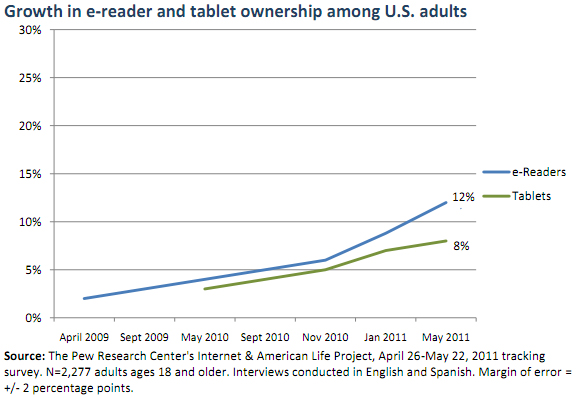
What's more, it appears e-readers outweigh the need to own a tablet. As e-readers such as the Nook Color become more and more sophisticated, many have wondered whether there's room for both devices in the marketplace. In other words, if we can read e-books on an iPad, and surf the web on a Nook Color, is there a need to own both devices? According to Pew's survey, just 3% of adults own both an e-reader and a tablet. About 5% own a tablet but not a reader--roughly half of the number of adults who own an e-reader but not a tablet.
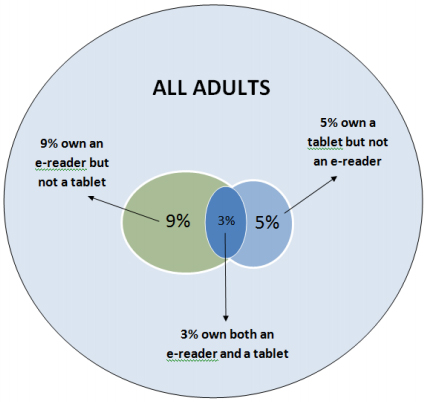
Still, while e-reader and tablet sales have certainly rocketed, it's important not to forget how early it is in both markets. Adoption rates for e-readers and tablets trail very far behind other more established devices, such as cellphones, laptops and desktops, MP3 players, and DVRs.

Yet all we hear about today are tablets and e-readers. For that, I blame Amazon and Apple.
[Image: Flickr user Ed Yourdon]
Read More: Barnes & Noble Beats Amazon To The Android App Punch, But Kindle Will Likely Prevail


 Eleven Questions (and Answers) about Corporate Ecosystem Valuation, Part II
Eleven Questions (and Answers) about Corporate Ecosystem Valuation, Part II
by: Environmental Leader, 2011-06-27 14:49:21 UTC

Ecosystem services are the benefits people gain from the environment and biodiversity such as water, crops, timber, flood protection, waste assimilation, carbon sequestration and recreation. Every person and every business depend on and affect ecosystem services in some way. And today, there is growing interest among corporations in understanding how to value ecosystem services and [...]

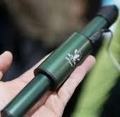









Comments by our Users
Be the first to write a comment for this item.